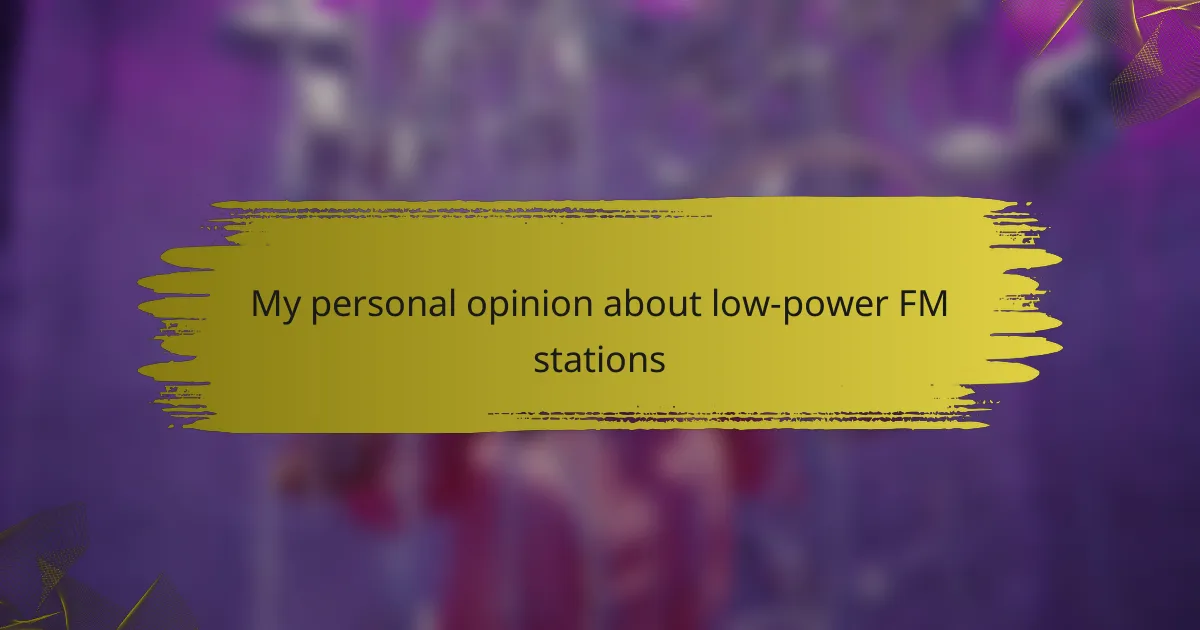Key takeaways
- Low-power FM (LPFM) stations serve local communities by amplifying diverse voices and fostering connections through unique programming.
- They promote civic engagement and provide platforms for underrepresented groups, enhancing community bonding and participation.
- LPFM stations face challenges such as limited funding, regulatory hurdles, and competition from larger broadcasters, impacting their operations.
- These stations play a crucial role in showcasing local talent and addressing community issues, setting them apart from traditional commercial radio.
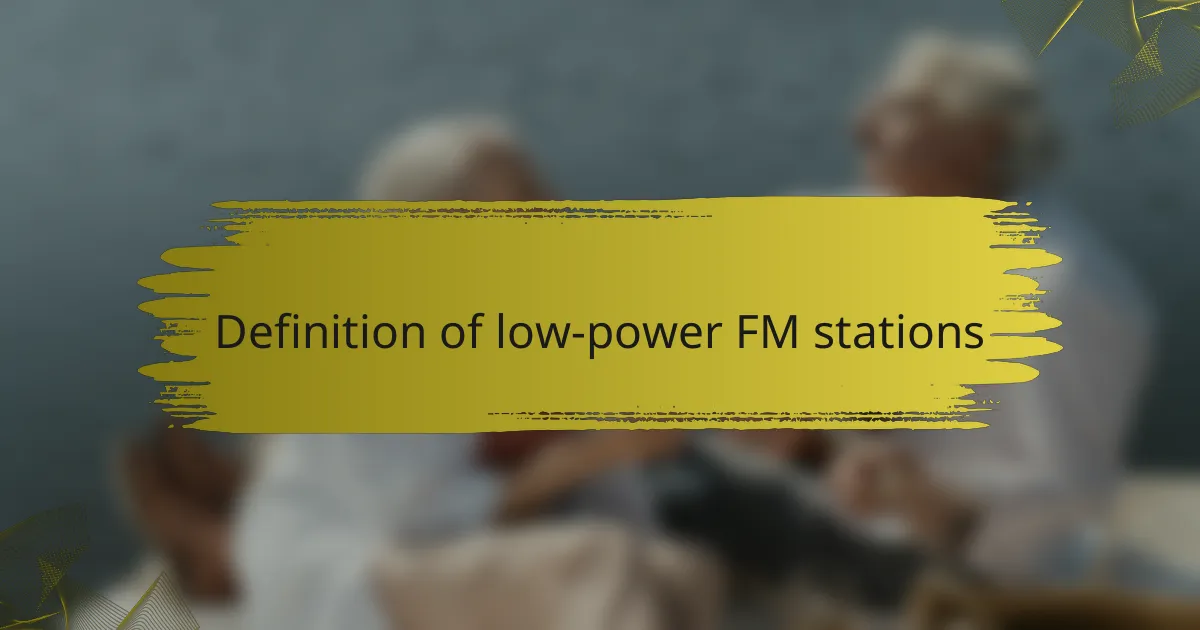
Definition of low-power FM stations
Low-power FM (LPFM) stations are community-based radio outlets that operate at a lower power and, typically, on a smaller coverage area than traditional FM stations. They are specifically designed to serve local communities, often providing a platform for voices and content that might not be represented in mainstream media.
In my experience, LPFM stations create a unique sense of connection among listeners. Imagine turning the dial and hearing a neighbor share their favorite song or announce a local event — it feels personal. Isn’t it refreshing to know there are places where community matters in radio?
These stations are usually run by non-profit organizations or local groups, making them accessible to a wider range of voices. With limited funding and volunteers often at the helm, LPFM embodies the spirit of grassroots media. Have you ever felt that thrill of a small group coming together to share their passion? That’s exactly the vibe that LPFM stations strive to capture.

Importance of independent radio media
Independent radio media holds a unique place in the landscape of broadcasting. It amplifies diverse voices and fosters creativity that often gets overshadowed by mainstream media. I recall the first time I stumbled upon a low-power FM station—it felt like discovering a hidden gem. The authenticity and local flavor made me realize how fundamental these stations are to community bonding.
These stations not only provide local news and music but also serve as platforms for important discussions often ignored by larger broadcasters. Here are some highlights:
- Community Connection: Independent stations often reflect the local culture, helping to create a sense of belonging.
- Diverse Voices: They give a platform to underrepresented groups, allowing for a rich variety of perspectives.
- Creative Freedom: With fewer commercial constraints, DJs and hosts can explore unique content, from local events to niche music genres.
- Civic Engagement: They foster civic participation by discussing local issues and encouraging audience involvement.
- Educational Opportunities: These stations often serve as practical training grounds for aspiring broadcasters, journalists, and media enthusiasts.
Engaging with independent radio media can be a profoundly enriching experience. Each broadcast carries the heartbeat of the community, making listeners feel seen and heard.
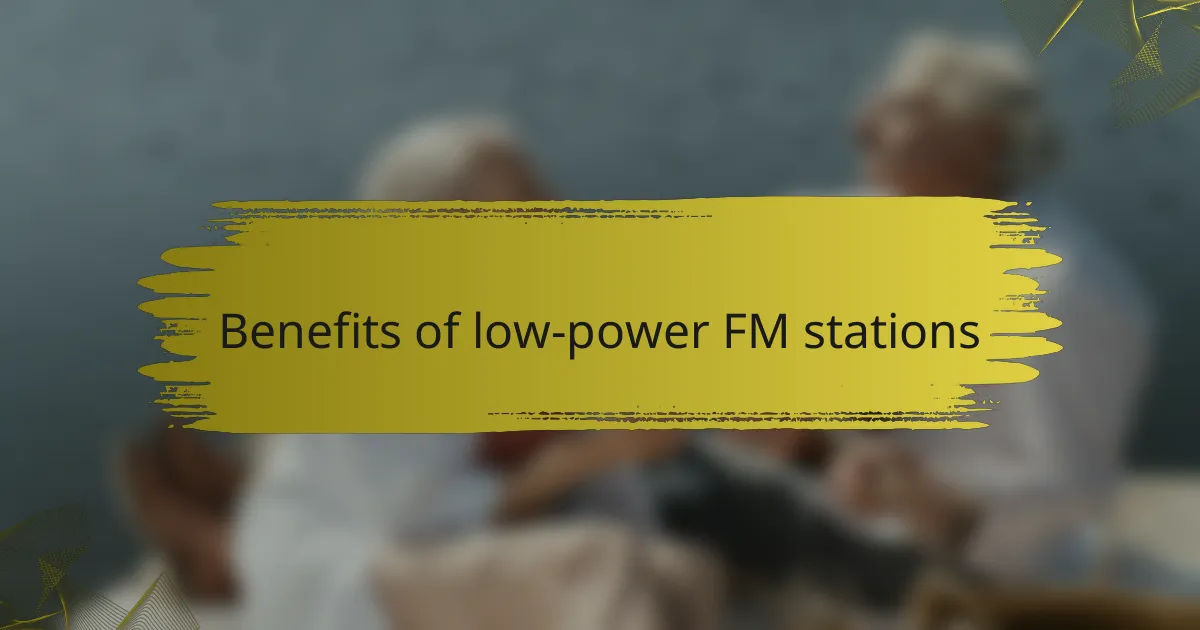
Benefits of low-power FM stations
Low-power FM (LPFM) stations play a pivotal role in amplifying local voices that often go unheard. From my own experience volunteering at a community radio station, I witnessed first-hand how such platforms empower individuals to share stories and music that resonate deeply with their neighborhoods. It’s not just about broadcasting; it’s about building a sense of community and fostering connections among listeners.
The benefits of low-power FM stations are numerous:
- Community Engagement: They promote local culture and give residents a platform to express their views and creativity.
- Diverse Programming: LPFMs often feature unique content that reflects the interests and needs of local audiences.
- Accessibility: With lower operating costs, they provide opportunities for individuals and organizations who may not have the resources to launch a full-scale radio station.
- Audience Connection: The localized focus helps to create a more loyal listener base, fostering genuine relationships between the station and its audience.
These aspects collectively enhance the fabric of our communities, making LPFM stations invaluable resources.
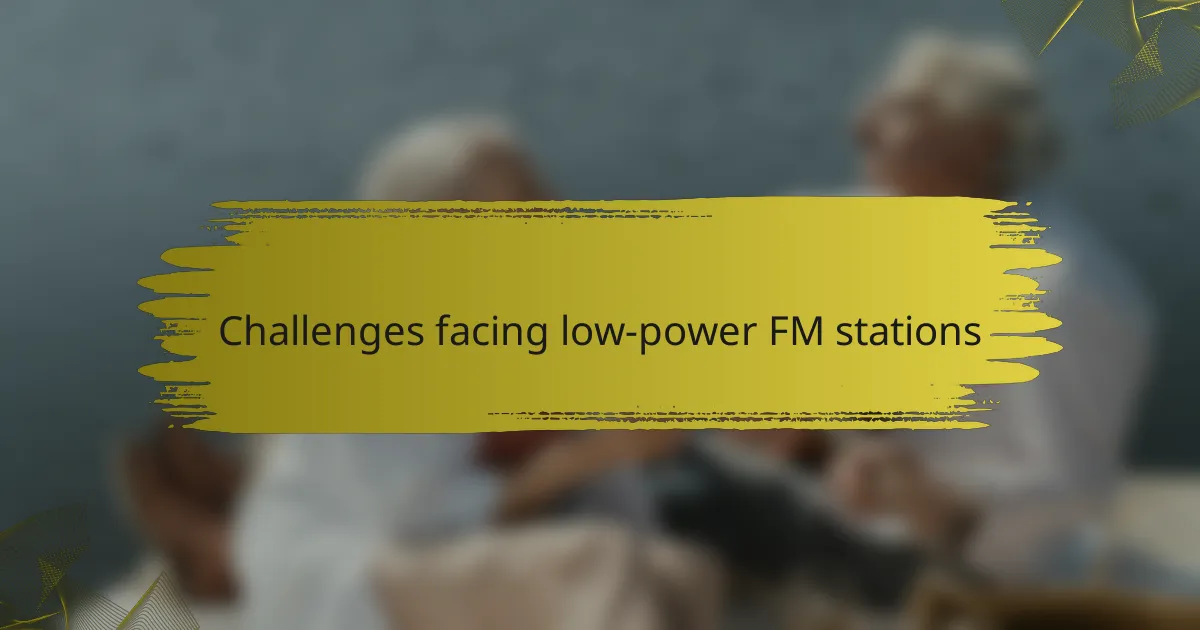
Challenges facing low-power FM stations
Low-power FM (LPFM) stations face significant challenges that can hinder their potential. One of the most pressing issues is securing adequate funding. From my experience, many LPFM stations operate on shoestring budgets, relying heavily on community donations and grants. I remember volunteering at a local LPFM, where every dollar counted in keeping the station alive; it was disheartening to see high-quality programming sometimes sidelined due to financial constraints.
Another challenge is navigating regulatory hurdles. LPFM stations have to comply with various FCC rules, which can be daunting for small community-run operations. The bureaucracy can feel overwhelming. I recall the lengthy paperwork process we went through just to get our broadcast license. This experience taught me that while the passion for community radio is strong, the logistics can be quite discouraging.
- Limited funding sources, relying on community donations and grants
- Regulatory complexity, navigating FCC rules and compliance
- Competition with larger, commercial stations for audience attention
- Technical challenges, including equipment maintenance and upgrades
- Community engagement, building a listener base in a crowded media landscape

Personal experiences with low-power FM
Low-power FM stations have a unique charm that I’ve come to appreciate over the years. My first encounter with one was during a road trip, where I stumbled upon a station broadcasting local music and community announcements. It felt refreshing to hear voices and stories from my area, connecting me to the heart of the community in a way that mainstream radio often overlooks.
I remember a particular broadcast that featured interviews with local artists and discussions about upcoming events. This experience not only made me feel more involved in my community but also sparked a passion for supporting local talent. I believe low-power FM stations create a sense of belonging that you just don’t find elsewhere.
| Feature | Low-power FM Stations | Traditional FM/AM Stations |
|————————–|——————————–|——————————-|
| Community Focus | Local voices and events | Nationally syndicated content |
| Accessibility | Often more accessible to locals| Limited to larger markets |
| Content Variety | Diverse local programming | Standardized playlists |
| Listener Engagement | High interaction with audience | Limited audience interaction |
| Music Diversity | Emphasis on local artists | Mainstream music focus |
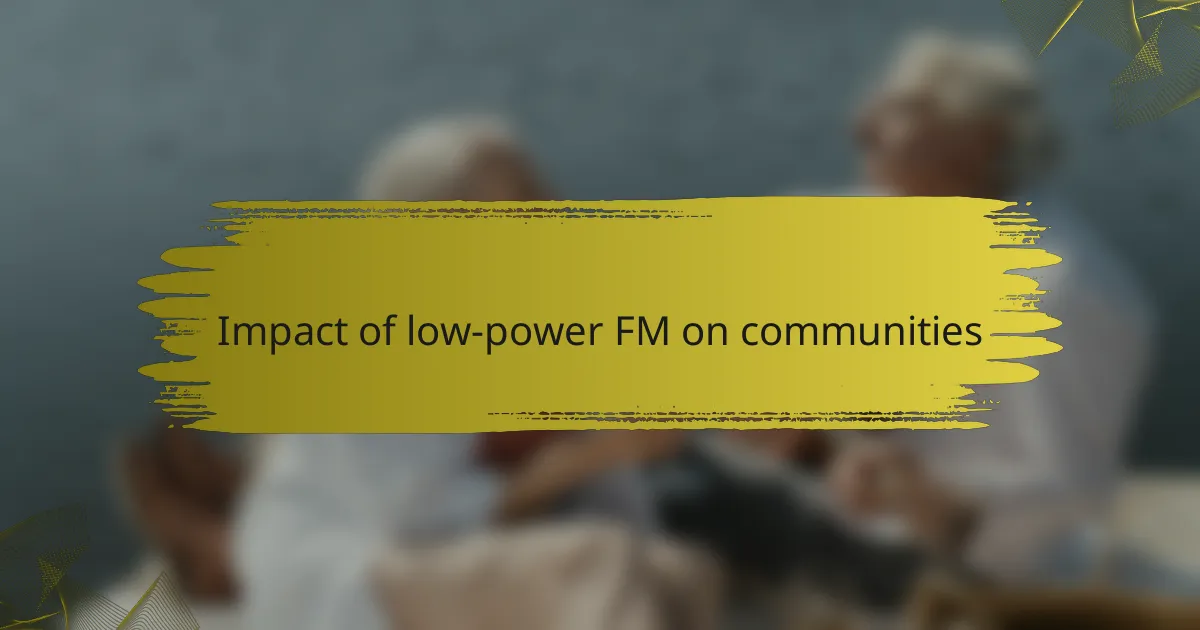
Impact of low-power FM on communities
Low-power FM (LPFM) stations have a remarkable ability to foster community engagement. I’ve seen firsthand how these small stations amplify local voices that often go unheard. They provide a platform for diverse programming that resonates with the needs and interests of the community, creating a sense of belonging.
One of my favorite experiences was tuning into a local LPFM station during a town festival. The broadcast included interviews with local artists and coverage of community events. It felt as though the station was weaving the fabric of our neighborhood together, highlighting the stories and talents that made us unique.
Moreover, LPFM stations often address local issues directly. They can be powerful advocates for change, whether it’s promoting local initiatives or providing critical information during emergencies. This direct connection to the community is what truly sets LPFM apart from larger commercial stations.
| Aspect | Impact of LPFM Stations |
|---|---|
| Community Engagement | Amplifies local voices and supports diverse programming |
| Local Stories | Showcases local artists and events, fostering a sense of belonging |
| Advocacy | Addresses community issues and promotes local initiatives |
